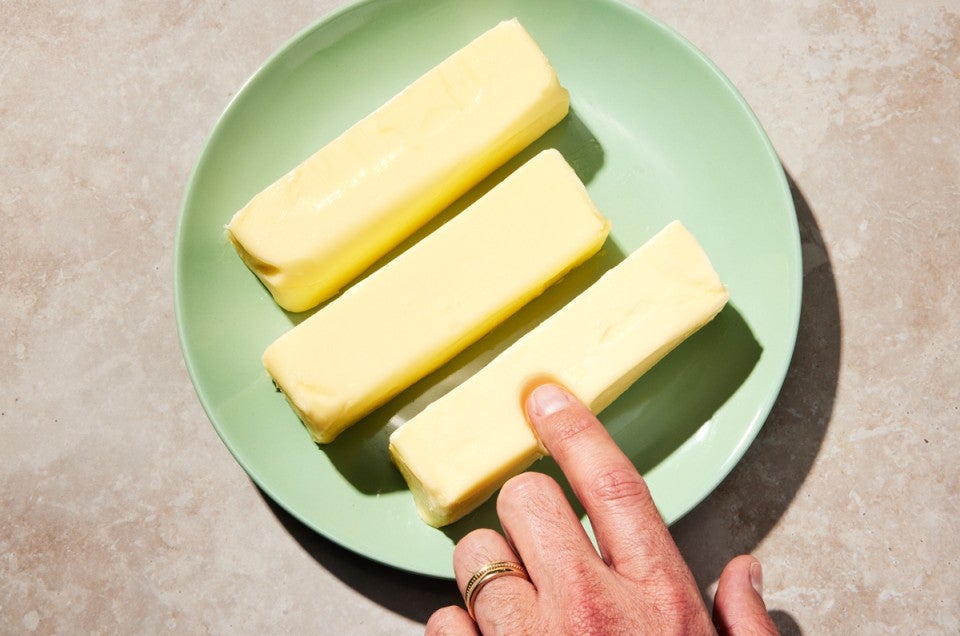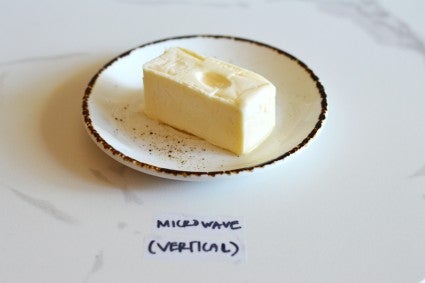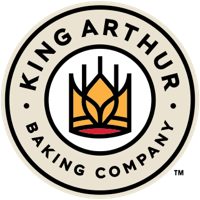Baking trials: How to soften butter quickly
Does the best method involve your microwave?


You need softened butter — and you need it now. Do you risk it all and microwave it? Do you rearrange your schedule and wait hours for it to come to room temperature on the counter? Or do you try another hack: a hot water bath or a DIY butter sauna or more?
Countless tips, tricks, and techniques abound to soften butter fast. Some are worth it, and some aren’t. We tested them all to find the best way to soften butter quickly. But first …

The best way to tell if butter is perfectly soft is by pressing your finger into it. It should feel like clay — you’re easily able to press an indent, but it has some resistance. The butter should not be greasy, and your finger shouldn’t be able to press all the way through the butter to the surface underneath — if that’s the case, it’s too hot.
Butter typically needs to be soft when creaming with sugar. During this step, sugar is whipped into the butter, creating little pockets of air from the sugar crystals that lighten and aerate the butter. This translates to pockets of air in the final baked good, which results in fluffier, taller bakes.
If the butter is too cold while creaming, the sugar won’t be able to create air pockets effectively and baked goods will be more dense; if the butter is too hot (and thus too soft), it will not hold its shape and be able to support a network of air pockets from the sugar, again making the baked good dense.
Butter also needs to be soft for other baking steps, like coating flour in a cake made using the reverse-creaming method. If the butter is too hard, it won’t be able to blend into the flour; too soft and it will make the flour mixture greasy. Similar principles apply to making buttercreams or enriched breads, in which you need to beat soft butter into a mixture. It has to hold its shape but blend easily and emulsify into the mixture.
All tests were done using Land O Lakes unsalted butter in a 73°F kitchen. Note that different temperatures and butters with different water content will result in slightly varied time ranges for each of these methods.
First, the classic method, used here as a control:
To speed up softening on the countertop, some bakers recommend slicing your butter to expose more surface area and bring it to room temperature more quickly:
Other bakers laud different hacks that create a warm environment to soften butter quickly. We tried those out:
And then there’s the microwave. Everyone says you shouldn’t microwave your butter to soften it, but are they just being dramatic?

That’s right: After testing, our favorite method involves microwaving butter, but in a very specific way. It has to be placed vertically, which exposes more surface area and results in even softening, without patches of hot and cold spots. And it all takes less than 20 seconds, so you can pick a recipe and start baking within minutes.
Note: All microwaves are different, so play around with a few seconds more or less to determine the perfect setting for your butter. These tests were conducted in a 1000-watt microwave.
If you don’t have access to a microwave, we recommend slicing butter and leaving it on the counter. You can use the 30 minutes or so it takes to soften to prepare your mise en place and get organized to bake.
And remember, if you accidentally go too far with any of these methods and end up with butter that’s halfway to melting, we have several recipes that call for melted butter. Try Melted Butter Pie Crust, Crumpets, or Rye Chocolate Chip Cookies. And if your plans change and you’re wondering if you can put softened butter back in the fridge — we’ve got the answer here.
Cover photo by Rick Holbrook; food styling by Kaitlin Wayne.


October 21, 2023 at 11:01pm
I have trick for softening butter. I place the still wrapped sticks in a baking dish and loosely wrap with an electric heating pad on low heat. Usually takes about 20 mins.
October 19, 2023 at 9:54pm
Grating the butter onto a plate has it soft by the time you finish grating it.
October 28, 2024 at 7:21pm
In reply to Grating the butter onto a… by Patricia (not verified)
I have had good luck with grating too.
October 19, 2023 at 10:35am
Is there a particular temperature you might check for in a stick of softened butter?
October 21, 2023 at 9:15am
In reply to Is there a particular… by Debra Elliott (not verified)
Hi Debra! Room temperature butter is going to measure somewhere between 65 to 70 degrees F. Happy Baking!
October 18, 2023 at 9:39pm
You say vertical under the picture of what I think is a horizontal placement? I am confused.
October 22, 2023 at 10:37am
In reply to You say vertical under the… by Jan Potter (not verified)
Hi Jan, this photo is a bit confusing. The "vertical" label indicates the orientation of the butter when placed in the microwave, but it needed to be placed horizontally in order to be able to press a finger into it.
November 10, 2023 at 1:19am
In reply to You say vertical under the… by Jan Potter (not verified)
I agree. That looks horizontal to me!
October 17, 2023 at 11:42pm
Timing might be different for different sized sticks of butter. Your stick is short and fat, mine are longer and thinner. I think it’s a regional thing. They’re both a quarter of a pound. But I will definitely try the vertical microwaving. Thank you!
October 19, 2023 at 6:03pm
In reply to Timing might be different… by Wendy Anastaso… (not verified)
Hi Wendy! You may have to do a few rounds of microwaving to find the best timing for your preferred brand of butter since some brands do come in different sized sticks. We would suggest using small increments of time until you find what works best for you. Reach out anytime with questions and Happy Baking!
Pagination